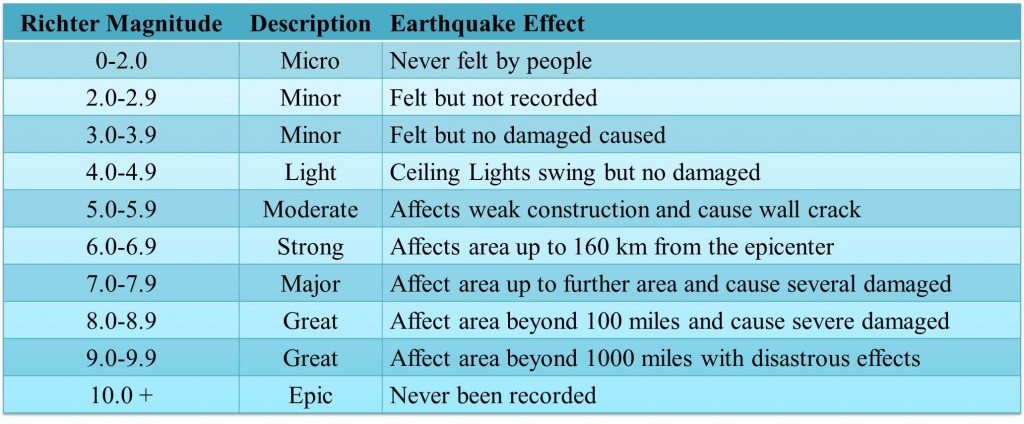

The magnitude is based on the moment of the earthquake equal to the rigidity of the earth multiplied by the average amount of slip on the fault and the size of the area that slipped. This is now used by seismologists to measure the magnitude of earthquakes. Hanks and Hiroo Kanamori introduced the Moment Magnitude Scale (MMS). It has also proved to be unreliable if measurements are taken at a distance of more than about 350 miles (600 km) from the epicenter.ĭue to the short comings of the Richter Scale, two Harvard University seismologists, Thomas C. One of the downfalls of this scale is it has an upper limit on highest measurable magnitude. The amplitude of the waves increases by powers of 1- in relation to the Richter magnitude numbers. The numbers on the scale range from 0-10. Adjustments are made to compensate for the differences in distance between seismographs and the epicenter of the earthquake. A seismograph functions by a weight that is freely suspended from a support that is attached to bedrock and each wave is recorded as the weight moves. Information of seismic activity is gathered using a seismograph. It is also known as the local magnitude scale. It was designed to measure medium-sized quakes (3.0-7.0) in Southern California. The Richter Scale was developed in 1035 by American seismologist Charles F. For many years the magnitude from the seismic waves from these quakes have been measured with the use of the Richter Scale. Some so slight they can’t be felt, while others, which occur much less frequently, can cause catastrophic damage. When there is a shift in the tectonic plates an earthquake occurs.Įach year worldwide thousands of earthquakes occur. Cracks in these plates are called fault lines. These plates are actually huge slabs of rock 50-650 feet (15-200 km) thick.

Intensity X (10) is the highest value on the MMI.The earth’s continents and seas are carried on underground oceans of extremely hot and semi-solid materials by tectonic plates. As the level rises toward the larger numbers, the amount of damage increases considerably. At this level doors would rattle, dishes break and weak or poor plaster would crack. For example a level I-V on the Mercalli scale would represent a small amount of observable damage. Thus, the magnitude scale is considered scientifically more objective and therefore more accurate. From a scientific standpoint, the magnitude scale is based on seismic records while the Mercalli is based on observable data which can be subjective. The Mercalli Scale is based on observable earthquake damage. In the United States, we use the Modified Mercalli (MMI) Scale. Sometimes earthquakes are referred to by the maximum intensity they produce. An earthquake causes many different intensities of shaking in the area of the epicenter where it occurs. So the intensity of an earthquake will vary depending on where you are. Intensity scales, like the Modified Mercalli Scale and the Rossi-Forel scale, measure the amount of shaking at a particular location. This happens because the relation between the seismic measurements and the magnitude is complex and different procedures will often give slightly different magnitudes for the same earthquake. Often, several slightly different magnitudes are reported for an earthquake. The magnitude does not depend on where the measurement is made. Magnitude scales, like the moment magnitude, measure the size of the earthquake at its source.


 0 kommentar(er)
0 kommentar(er)
